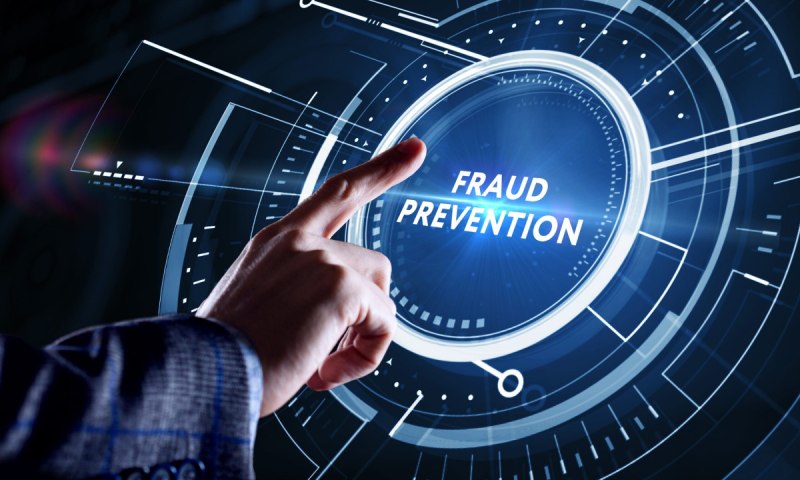Business
7 Suggestions for International Businesses to Prevent Fraud

For global corporations, fraud prevention is essential since it protects their assets and shareholder trust. Due to their scale, geographic dispersion, and variety of operations, these businesses are vulnerable to a range of fraud risks, including internal misbehavior and cyberattacks.
This intricacy increases the likelihood of fraudulent activity and makes control difficult to sustain. Multinational corporations can safeguard themselves against monetary loss, legal consequences, and reputational harm by making fraud prevention a top priority. This will ensure their long-term success and stability in the global market.
1. Put in Place Strong Cybersecurity Safeguards
Despite the fact that 51% of small firms do not have strong cybersecurity defenses, such as firewalls, antivirus software, and intrusion detection systems, protecting against cyber threats is crucial.
This error emphasizes how important it is for businesses, especially international enterprises, to put cybersecurity processes in place, update them frequently, and conduct regular audits. This kind of attentiveness guards against fresh attacks, guaranteeing the security of private information and upholding confidence in a constantly changing digital environment.
2. Train Staff Members on Fraud Awareness
A company’s cybersecurity strategy must include training staff to spot social engineering and phishing attacks. By conducting frequent training sessions and simulations, businesses can greatly lower their susceptibility to these threats.
These training initiatives provide staff members the tools they need to act as the first line of defense, recognizing and reporting questionable activity and averting possible security breaches. These preventive actions improve the workforce’s general security posture and cultivate a culture of accountability and alertness.
3. Make Internal Controls Stronger
To reduce the danger of internal fraud, strong access controls and job segregation must be established. According to one study, an owner or executive’s activities were the cause of 39% of fraud incidents in nonprofit organizations. By guaranteeing that no single person has total control over financial transactions or sensitive information, this strategy reduces the likelihood of fraud.
Furthermore, by employing automated technologies to keep an eye out for odd activity occurring within the company’s network, fraud risks can be identified early on and mitigated more quickly. These tactics fortify the organization’s defense against internal challenges, preserving its resources and integrity.
4. Keep An Eye On and Examine Financial Transactions
In today’s global business world, advocating for real-time surveillance of transactions—especially those that transcend international borders—is essential. This procedure lowers the possibility of fraud and financial loss by enabling businesses to quickly identify and address questionable activity.
Furthermore, regular audits, whether carried out by external or internal auditors, reveal any abnormalities that could have eluded earlier defenses. These audits ensure the financial integrity of multinational firms by exposing disparities and fostering a culture of transparency and accountability.
5. Use Data analytics To Identify Fraudulent Activity
A company’s capacity to detect fraudulent activity can be greatly improved by incorporating modern data analytics into its fraud prevention strategy. Through the analysis and identification of patterns within large datasets, these tools offer crucial insights that conventional approaches may overlook.
Businesses may respond quickly to reduce risks by using data analytics to identify anomalous transactions, erratic patterns, or inconsistent behaviors that may indicate fraud. By integrating this technology into the framework for preventing fraud, firms may fortify their defenses and take proactive measures to protect their assets and reputation.
6. Encourage An Honest and Transparent Culture
Fraud can be avoided by fostering an environment at work that values moral conduct and honest communication. A culture like this makes sure that workers feel important and accountable for maintaining the integrity of the company. This environment is promoted by establishing explicit policies on fraud prevention and putting in place systems for anonymously reporting suspicions.
These actions not only show the company’s dedication to accountability and openness, but also provide employees the freedom to take action when they see something fishy. They provide a strong basis for a reliable and safe company.
7. Work Along With Law Enforcement and Other Global Corporations
It is quite advantageous to network with other global corporations in order to exchange ideas and fraud prevention tactics, since joint efforts can result in stronger defenses against fraud. Notably, tips accounted for 43% of occupational fraud detection in 2020, highlighting the importance of open lines of communication both inside and between businesses.
Companies can also keep one step ahead of fraudsters by collaborating closely with law enforcement and cybersecurity authorities, which can give them access to the most recent threat intelligence and best practices.
-

 Sports4 weeks ago
Sports4 weeks agoAl Ahly vs Inter Miami, 2025 FIFA Club World Cup – Preview, Prediction, Predicted Lineups and How to Watch
-
Health3 weeks ago
Back to Roots: Ayurveda Offers Natural Cure for Common Hair Woes
-

 Tech3 weeks ago
Tech3 weeks agoFrom Soil to Silicon: The Rise of Agriculture AI and Drone Innovations in 2025
-

 Startup4 weeks ago
Startup4 weeks agoHow Instagram Is Driving Global Social Media Marketing Trends
-

 Sports3 weeks ago
Sports3 weeks agoFIBA 3×3 World Cup 2025: Full Schedule, Preview, and How to Watch
-

 Science4 days ago
Science4 days agoJuly Full Moon 2025: Everything You Should Need to Know, When and Where to See Buck Moon
-

 Gadget3 weeks ago
Gadget3 weeks agoThings to Know about Samsung Galaxy S26: What’s New and What’s Next
-

 Sports4 weeks ago
Sports4 weeks agoWorld Judo Championships 2025: Full Schedule, Date, Time, Key Athletes and How to Watch















